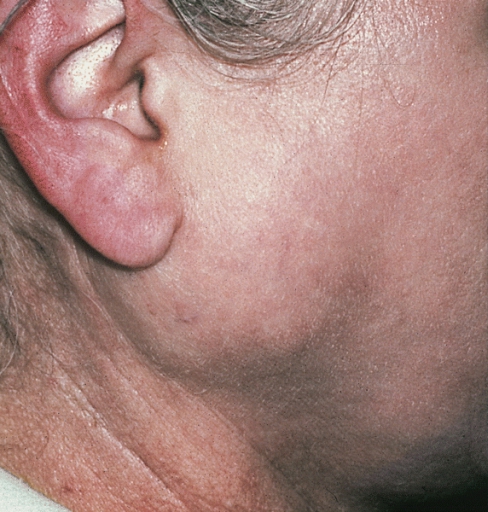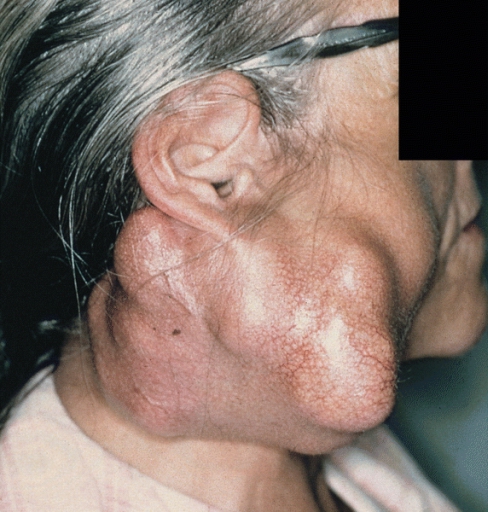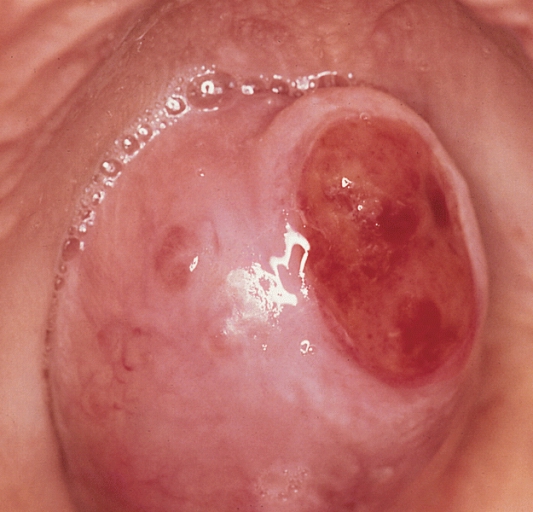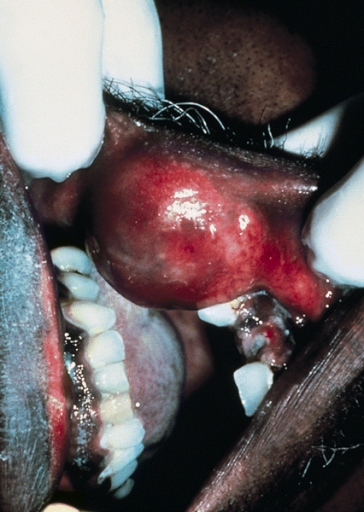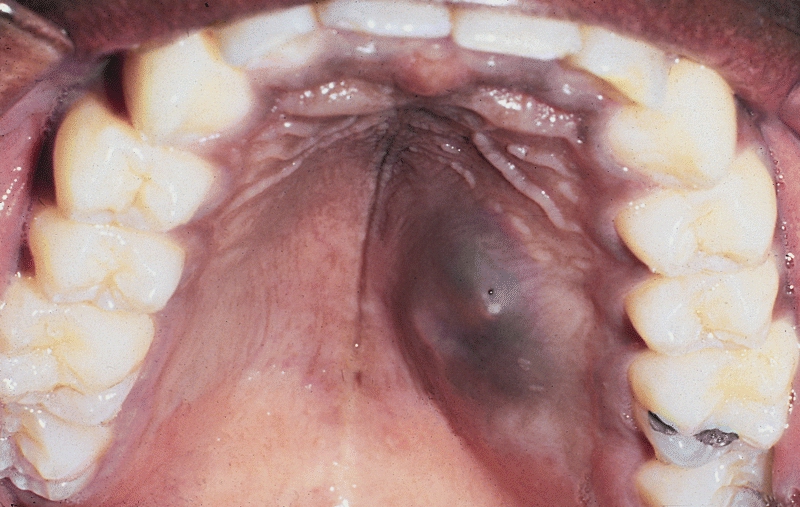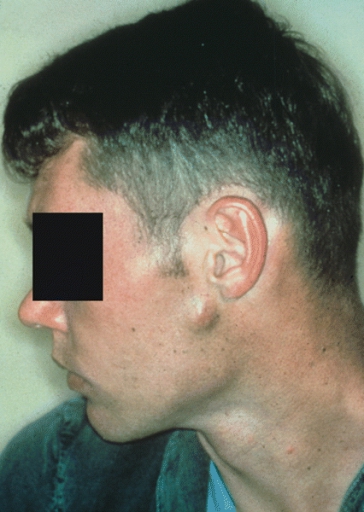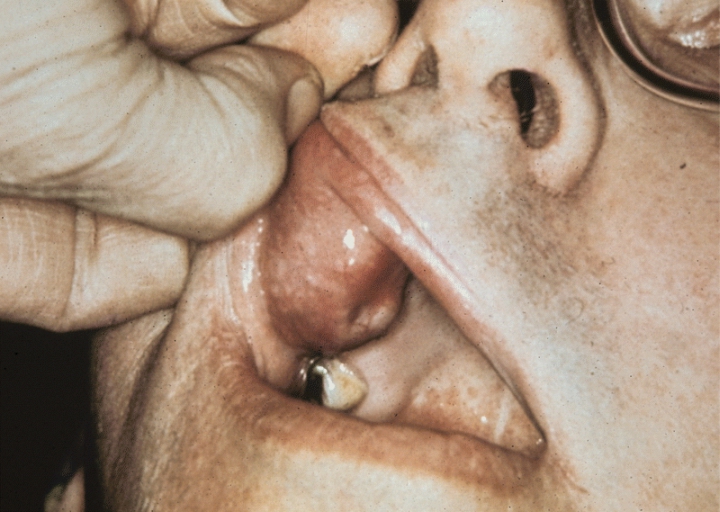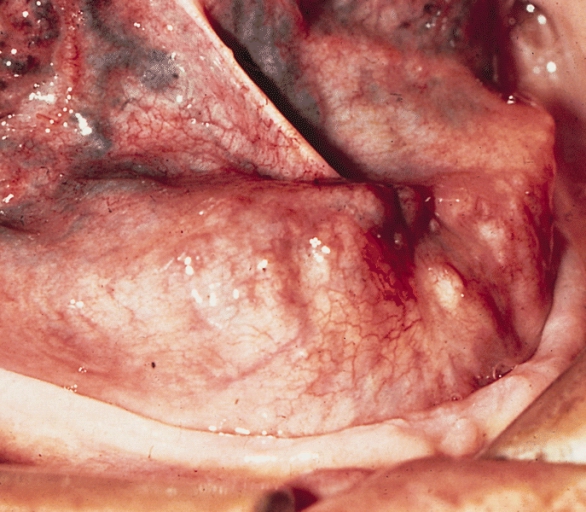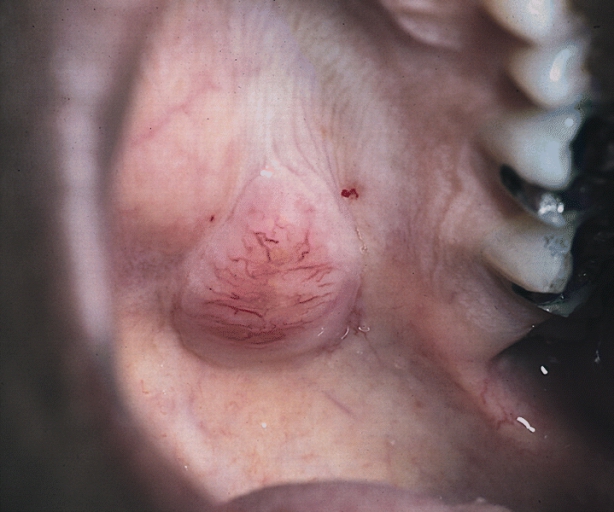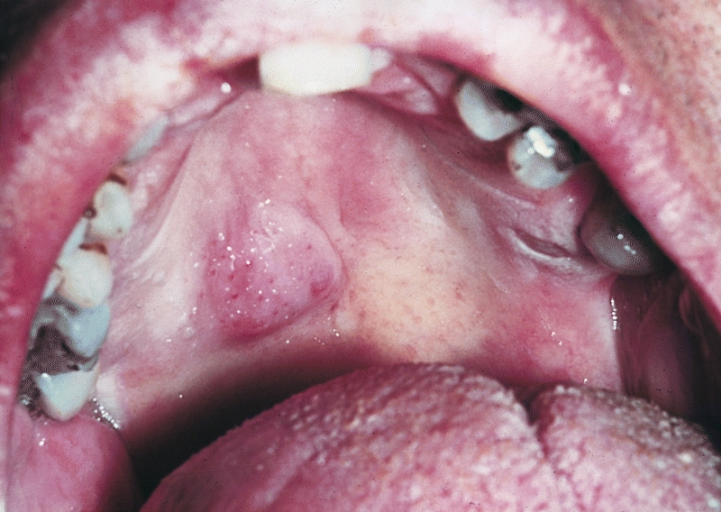Salivary gland tumor: Difference between revisions
No edit summary |
|||
| Line 4: | Line 4: | ||
==Overview== | ==Overview== | ||
'''Tumors of the salivary glands''' ('''salivary gland neoplasm''') are usually benign, but may be malignant. The most common type of benign tumor is [[pleomorphic adenoma]], followed by [[Warthin's tumor]]. The most common malignant tumor is [[mucoepidermoid carcinoma]]. Eighty percent begin in the [[parotid gland]].<ref name="urlACS :: What Is Salivary Gland Cancer?">{{cite web |url=http://www.cancer.org/docroot/cri/content/cri_2_4_1x_what_is_salivary_gland_cancer_54.asp |title=ACS :: What Is Salivary Gland Cancer? |format= |work= |accessdate=}}</ref> | '''Tumors of the salivary glands''' ('''salivary gland neoplasm''') are usually benign, but may be malignant. The most common type of benign tumor is [[pleomorphic adenoma]], followed by [[Warthin's tumor]]. The most common malignant tumor is [[mucoepidermoid carcinoma]]. Eighty percent begin in the [[parotid gland]].<ref name="urlACS :: What Is Salivary Gland Cancer?">{{cite web |url=http://www.cancer.org/docroot/cri/content/cri_2_4_1x_what_is_salivary_gland_cancer_54.asp |title=ACS :: What Is Salivary Gland Cancer? |format= |work= |accessdate=}}</ref> | ||
==Classification== | |||
[[File:Mixed Tumor of the Salivary Gland.jpg|thumb|Benign tumor of the submandibular gland, also known as pleomorphic adenoma, presented as a painless neck mass in a 40-year-old man. At the left of the image is the white tumor with its characteristic cartilaginous cut surface. To the right is the normally lobated submandibular salivary gland.]] | |||
Salivary gland neoplasms are classified by the [[World Health Organization]] as primary or secondary, benign or malignant, and by tissue of origin.<ref>[[#refiarc|IARC]], p. 210</ref> This system defines five broad categories of salivary gland neoplasms:<ref>[[#refiarc|IARC]], p. 210</ref> | |||
* ''malignant epithelial tumors'' (e.g. [[acinic cell carcinoma]], [[mucoepidermoid carcinoma]] and [[adenoid cystic carcinoma]], [[salivary duct carcinoma]]) | |||
* ''benign epithelial tumors'' (e.g. [[pleomorphic adenoma]], [[myoepithelioma]] and [[Warthin tumour]], [[sebaceous lymphadenoma]]) | |||
* ''soft tissue tumors'' ([[Hemangioma]]) | |||
* ''hematolymphoid tumors'' (e.g. [[Hodgkin lymphoma]]) | |||
* ''secondary tumors''. | |||
== Differential Diagnosis == | == Differential Diagnosis == | ||
Revision as of 18:20, 4 May 2012
Template:Search infobox Editor-In-Chief: C. Michael Gibson, M.S., M.D. [1]
Overview
Tumors of the salivary glands (salivary gland neoplasm) are usually benign, but may be malignant. The most common type of benign tumor is pleomorphic adenoma, followed by Warthin's tumor. The most common malignant tumor is mucoepidermoid carcinoma. Eighty percent begin in the parotid gland.[1]
Classification
Salivary gland neoplasms are classified by the World Health Organization as primary or secondary, benign or malignant, and by tissue of origin.[2] This system defines five broad categories of salivary gland neoplasms:[3]
- malignant epithelial tumors (e.g. acinic cell carcinoma, mucoepidermoid carcinoma and adenoid cystic carcinoma, salivary duct carcinoma)
- benign epithelial tumors (e.g. pleomorphic adenoma, myoepithelioma and Warthin tumour, sebaceous lymphadenoma)
- soft tissue tumors (Hemangioma)
- hematolymphoid tumors (e.g. Hodgkin lymphoma)
- secondary tumors.
Differential Diagnosis
In alphabetical order the different tumor types that must be differentiated from each other include the folloiwng: [4] [5]
Benign
- Lymphoepithelial lesion
- Monomorphic adenoma
- Pleomorphic adenoma
- Sebaceous tumor
Malignant
- Adenocarcinoma
- Adenoid cystic carcinoma
- Malignant mixed tumor
- Mucoepidermoid carcinoma
- Squamous Cell Carcinoma
Pathological Findings
-
SALIVARY GLANDS: MIXED TUMOR OF PAROTID. The pre-auricular mass had enlarged to this size over a period of 5 years.(Courtesy of Dr. Charles E. Tomich, Indianapolis, IN.)
-
SALIVARY GLANDS: RECURRENT MIXED TUMOR. The characteristic multinodular growth of recurrent mixed tumor is obvious inthis parotid mass. (Courtesy of Dr. Lewis R. Eversole, Los Angeles, CA.)
-
SALIVARY GLANDS: MIXED TUMOR OF PALATE. Most mixed tumors involve only one side of the palate because there are few minor glands in the midline. In this case the tumor appears symmetrical on either side of the midline. Large intraoral tumors are susceptible to trauma-related ulceration, as illustrated here. (Courtesy of F. J.Kratochvil, Bethesda, MD.)
-
SALIVARY GLANDS: CANALICULAR ADENOMA. The upper lip is the site for over 70% of canalicular adenomas.
-
SALIVARY GLANDS: MUCOEPIDERMOID CARCINOMA OF PALATE. These tumors frequently are slightly raised, fluctuant, bluish discolorations of the palatal mucosa that are clinically thought to represent mucous escapereactions.
-
SALIVARY GLANDS: ACINIC CELL ADENOCARCINOMA: CLINICAL PRESENTATION: A 2.0-cm raised subcutaneous nodule just anterior to the lower portion of the ear is a common clinical presentation for acinic cell adenocarcinoma. The tumor is in the superficial lobe of the left parotid gland of this 24-year-old man.
-
SALIVARY GLANDS: ACINIC CELL ADENOCARCINOMA: CLINICAL PRESENTATION. The upper lip, or any other intra oral site, is an uncommon location for acinic cell adenocarcinoma.
-
SALIVARY GLANDS: ADENOID CYSTIC CARCINOMA. This sublingual gland tumor slowly enlarged to produce a large, lobulated mass in the anterior floor of the mouth. The oral mucosa is intact.
-
SALIVARY GLANDS: POLYMORPHOUS LOW-GRADE ADENOCARCINOMA. This tumor presented as a well-circumscribed, slow growing mass at the junction of the hard and soft palates. Pronounced telangiectasia of the overlying mucosa is evident. (Courtesy of Dr. Richard Canaan, Ocean Springs,MS.)
-
SALIVARY GLANDS: NECROTIZING SIALOMETAPLASIA. Swelling, as shown in this photograph of a palatal lesion, is a frequent initial clinical presentation. Many of the swellings subsequently ulcerate. (Courtesy of Dr. Ralph Correll, LosAngeles, CA.)
References
- ↑ "ACS :: What Is Salivary Gland Cancer?".
- ↑ IARC, p. 210
- ↑ IARC, p. 210
- ↑ Sailer, Christian, Wasner, Susanne. Differential Diagnosis Pocket. Hermosa Beach, CA: Borm Bruckmeir Publishing LLC, 2002:77 ISBN 1591032016
- ↑ Kahan, Scott, Smith, Ellen G. In A Page: Signs and Symptoms. Malden, Massachusetts: Blackwell Publishing, 2004:68 ISBN 140510368X
